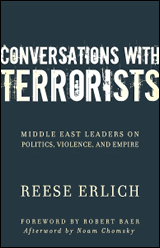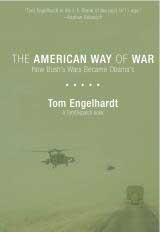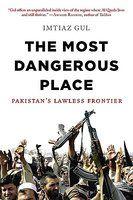Just as 2010 ended, the American military’s urge to surge resurfaced in a significant way. It seems that “leaders” in the Obama administration and “senior American military commanders” in Afghanistan were acting as a veritable WikiLeaks machine. They slipped information to New York Times reporters Mark Mazzetti and Dexter Filkins about secret planning to increase pressure in the Pakistani tribal borderlands, possibly on the tinderbox province of Baluchistan, and undoubtedly on the Pakistani government and military via cross-border raids by U.S. Special Operations forces in the new year.

Review: Talking With Terrorists
Stories on Middle East terrorism fill the headlines. But if this Washington Post story is typical, read journalist Reese Erlich’s book to know where truth lies: “U.S. military teams and intelligence agencies are deeply involved in secret joint operations with Yemeni troops, including the U.S. military’s clandestine Joint Special Operations Command, whose main mission is tracking and killing suspected terrorists.”
Who are these “suspected terrorists”?
The Cultural Assassinations of Baghdad
When the American tanks had completed their task breaking down the gates of the Art Museum, the first person to reach the main gallery, which was filled with hundreds of paintings by contemporary artists, was—unfortunately—a thief.
A World Made by War
After the drums of war had begun to beat, after the first headlines had screamed their World-War-II-style messages (“the Pearl Harbor of the 21st century”), I had another thought. And for a reasonably politically sophisticated guy, my second response was not only as off-base as the first, but also remarkably dumb. I thought that this horrific event taking place in my hometown might open Americans up to the pain of the world. No such luck, of course.
The War Addicts
On Monday, The Washington Post ran the first of three pieces adapted from Bob Woodward’s new book Obama’s Wars, a vivid account of the way the U.S. high command boxed the Commander-in-Chief into the smallest of Afghan corners.
War and DIplomacy – Part II: A Way Out of Afghanistan
Afghanistan is a crossroads of civilizations and an almost bewilderingly complicated place.
Over the past few centuries, however, it has more often than not been treated as a pawn in the “great game”. The country has also developed a reputation as the “graveyard of empires”, not least because outsiders’ forces have never succeeded in pacifying the place. Internal stability, such as it has ever existed, has been predicated typically upon de-centralized, and frequently shifting political arrangements between a weak centre and roiling periphery.
The American Way of War Quiz: This Was The War Month That Was (Believe It or Not)
Yes, it would be funny if it weren’t so grim. After all, when it comes to squandering money and resources in strange and distant places (or even here at home), you can count on the practitioners of American-style war to be wildly over the top.
Obama Fighting on all Fronts
Tuesday evening’s prime-time television address marking the withdrawal of all US “combat” troops from Iraq, as well as the following day’s formal launch here of direct talks between Israeli Prime Minister Benjamin Netanyahu and Palestinian National Authority President Mahmoud Abbas, will be hailed by the administration as key advances in restoring some stability to the world’s most volatile region.

Review: The American Way of War: How Bush’s Wars Became Obama’s
Since the attacks of September 11, protection from terrorism has become the United States’ national obsession. Demands for security from the terrorists that seemingly menace the country at every turn have led the U.S. military to occupy two countries and expand the hundreds of bases that it maintains in dozens of foreign nations.

Review: ‘The Most Dangerous Place’
In a speech he gave on March 27, 2009, President Obama referred to the remote areas of the Pakistani frontier as, “for the American people…the most dangerous place in the world.” It is from this speech that Imtiaz Gul drew the title of his book, The Most Dangerous Place: Pakistan’s Lawless Frontier. Gul provides a comprehensive, inside look at the chaotic situation in Pakistan’s tribal areas, which have become an epicenter for extreme Islamic militancy.
